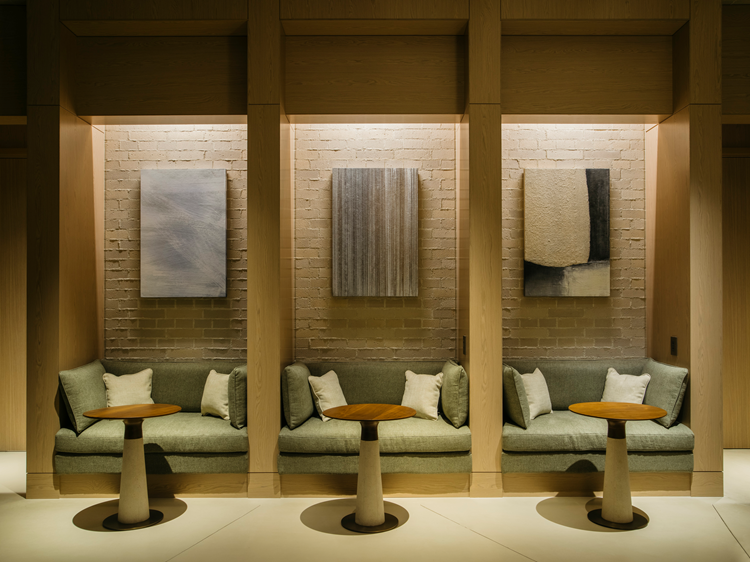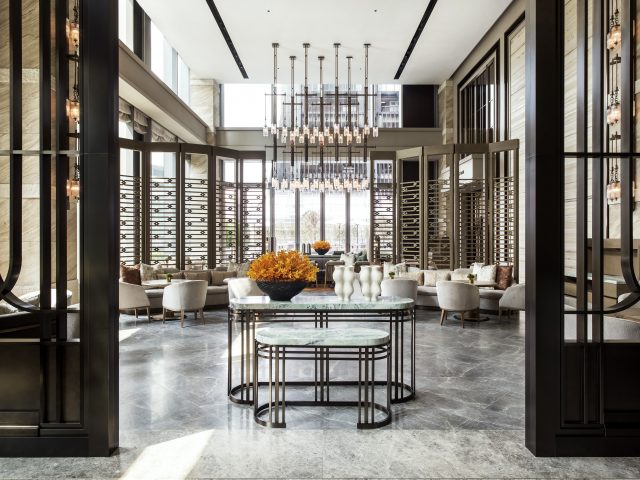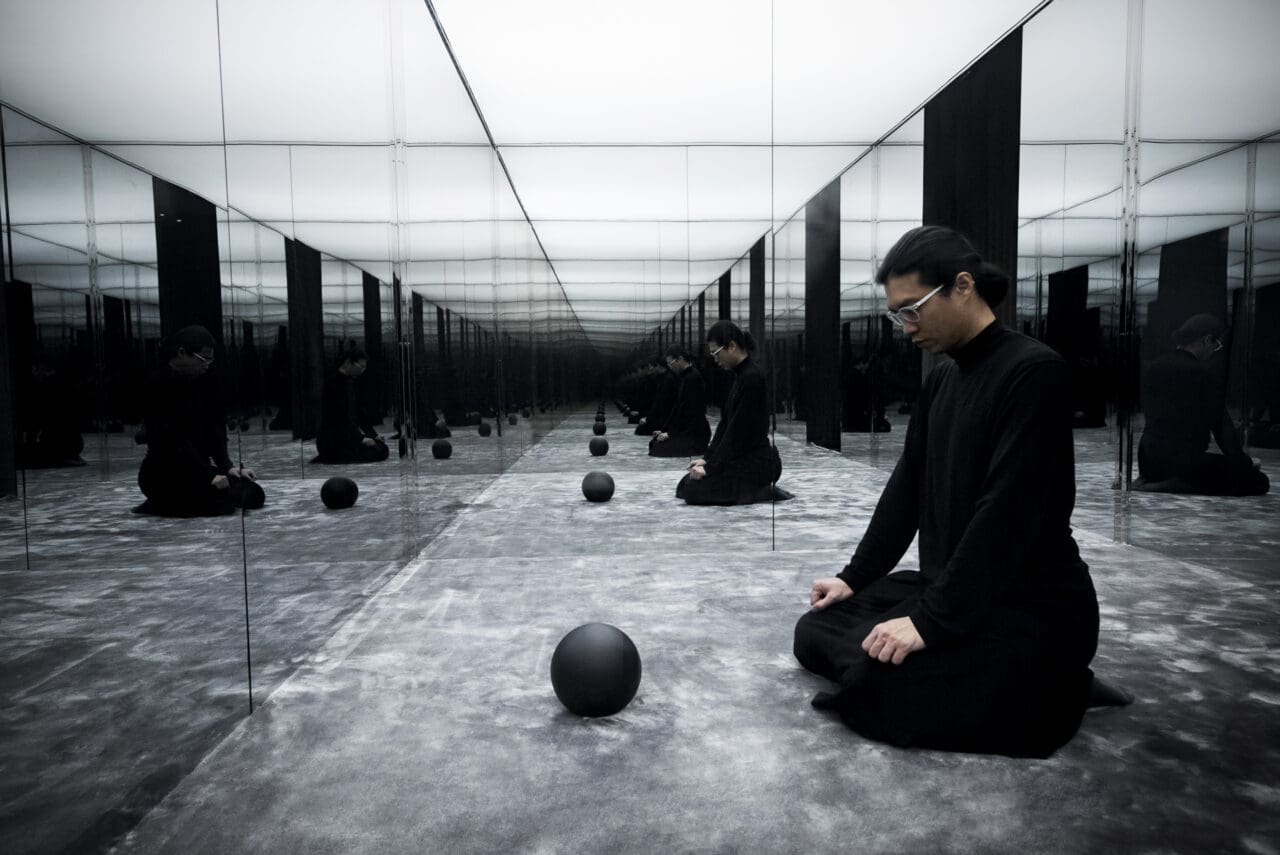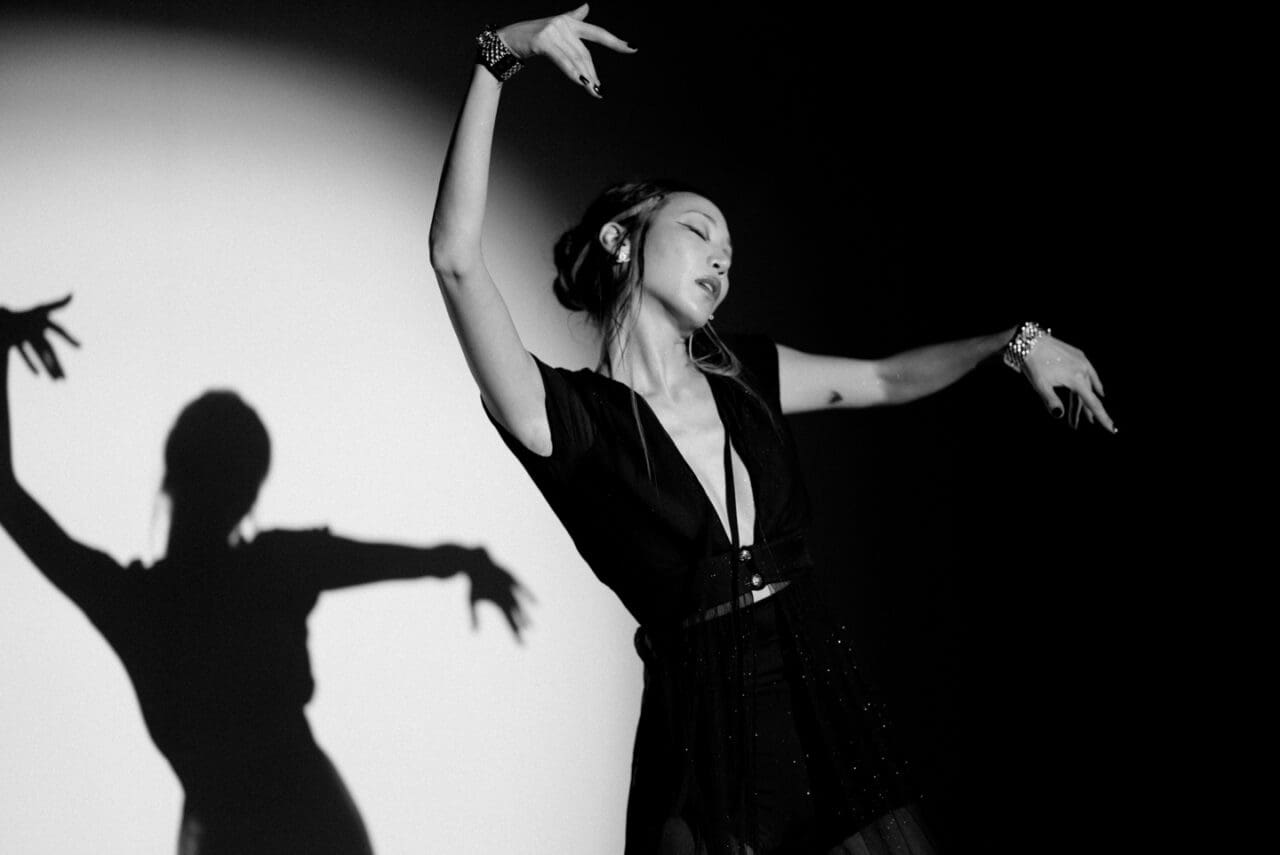Long recognised as a global design capital, Japan’s hotels and resorts are where visitors can get close and personal with the country’s impeccable design tradition, affording the best designers and brands the opportunity to flex their full creative vision.
Node
Designed by local architect Seiichiro Takeuchi to reflect the private home of an art collector, Node Kyoto houses 25 bedrooms in-keeping with their intimate gallery-like surroundings. Indeed, the boutique hotel showcases an expansive art collection including works by the likes of Gerhard Richter, Barry McGee, Bernard Frize and Nobuyoshi Araki. It also endeavours to become a cultural hub, hosting collaborative exhibitions, pop-up shops and guest gallerists in its lobby, where bespoke and antique furnishings, a floral ceiling centrepiece and a curation of books, sculptures and curiosities encourage guests to be inspired. An in-house restaurant with a farm-to-table concept and striking double-height bar is equally atmospheric. Throughout, the hotel is low-lit and moody, elevated by industrial textures and materials that are mirrored in the reinforced concrete and glass of the building’s contemporary exterior that blends into Kyoto’s Nakagyo Ward neighbourhood.
Zentis
New to the city of Osaka is Zentis, a contemporary hotel with interiors designed by UK-based Tara Bernerd. Built from scratch by Toshiken architecture office and Kajima Design, the building reflects Osaka’s industrial heritage, with timber and Ceppo stone, brickwork and ironmongery threaded throughout. A sculptural staircase, crafted from blue limestone, sets the design ante as the centrepiece of the entrance hall. While Tara similarly took reference from the city’s history and culture, the interior designer also sought inspiration, more specifically, from bento boxes, played out in the use of compartmentalisation to spark flow and functionality. She has curated a soothing natural colour palette of taupe, beige and grey, brought to life with mustard, emerald green and aquamarine, throughout, reflected in the paints and fabrics but also in the exaggerated brushstroke artwork by artist Masami Ehara, who is inspired by Japanese calligraphy.
Mogana
A long corridor with an undulating ceiling and pulsating light and sound creates a striking entrance to Mogana, a boutique hotel in the vicinity of Kyoto’s Nijo Castle designed by Takashi Yamaguchi & Associates to be a complete break from the outside world, yet deeply informed by the history of the city around it. Meaning “what if” in Japanese, Mogana prompts guests to interpret Japanese traditions and philosophy for themselves, an approach which is reflected in its ultra-minimalist interiors which reference the concept of the void. As such, white and black are used prodigiously throughout the hotel: in the lobby, where black slate from Kumano is used to pave a Japanese garden of camellia and arrow bamboo, and in some of the 23 rooms where every surface is a blinding white, urging guests to fill in the blanks with their own imagination. Voids in the form of inner courtyards are apparent throughout the structure, a design feature taken from traditional machiya that both regulates temperature as well as providing natural light. Incorporating tradition while embracing a new visual identity, Mogana offers a blueprint for the future of Japanese design.
Guntû
Although cruises are quickly shedding their less-than-stellar reputation as embodying the worst of modern tourism, Guntû practically elevates it into a form of high art. Indeed, this ship’s angular wooden form draws less parallels to a watercraft than a ryokan on the sea. Plying the calm, island-dotted waters of the Seto Inland Sea, Guntû was designed by architect Yasushi Horibe to be a distillation of the finest aspects of Japanese minimalism, each of its 19 rooms serving as a cocoon of serenity with private terraces and, in some cases, a private onsen bath too. Onboard, guests can dine on renowned chef Nobuo Sakamoto’s refined sushi using ingredients caught on the same day or harvested from the Seto Inland Sea’s coastal villages, before retiring to an in-suite shiatsu massage or a class on whisking matcha tea. Three-day itineraries are the norm and cover sights like the famous Itsukushima Shrine as well as Ritsurin Garden in Kagawa which, when approached from the sea, add all the more to the surreal experience of life aboard Guntû.
Muji Hotel Ginza
To Hongkongers, Muji is as synonymous with Japan as matcha. Its most ardent fans would do well to stay at the lifestyle brand’s newest hotel branch in Ginza, which offers their most complete vision of a life well lived. With a palette of naturally-hued woods, neutral fabrics and a marked absence of branding, the 79-room hotel is heavy on the use of wood and stone throughout, which aims to return city dwellers into the fold of nature. Nine types of rooms are on offer, from compact spaces with bunk beds that mirror the layout of a traditional machiya house, to tatami-style rooms that approximate the Japanese way of living. The hotel sits above Atelier Muji, which is essentially the brand’s custom-built mall that combines a restaurant focused on regional Japanese cuisine, a coffee and cocktail salon, two exhibition galleries, and a library on art and design. And it’s no surprise that Muji’s global flagship store inhabits the bottom six floors of the building, so that guests can pick up a keepsake on their way out.
Editor
Vogue Hong Kong









